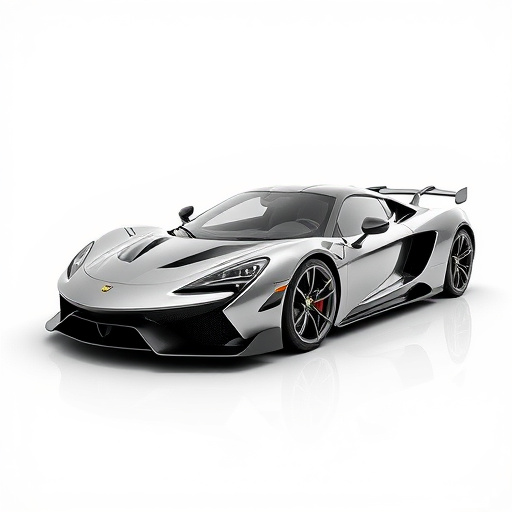The choice between dry and oiled filter intakes significantly impacts vehicle longevity and performance. Dry filters, simpler and cheaper, suffer from reduced efficiency due to dust buildup, requiring frequent replacements that may lead to engine wear. Oiled filter intakes, though more expensive upfront, offer longer lifespans through consistent debris capture and lubrication, reducing maintenance needs and extending operational periods. Future trends in filtration technology include advanced materials, intelligent sensors, and modular systems designed for sustainability and enhanced efficiency, addressing environmental concerns and diverse industry needs.
In the quest for optimal engine performance, longevity expectation is a paramount consideration. This article delves into the comparison between two prevalent filtration methods: dry filter and oiled filter intakes. We explore how these systems differ in durability and performance, factoring in technological advancements and practical implications. By understanding the nuances of dry filter vs oiled filter intakes, automotive enthusiasts and professionals can make informed decisions for enhanced engine longevity.
- Understanding Longevity Expectations: Dry Filter vs Oiled Filter Intakes
- Factors Influencing Durability and Performance
- Practical Implications and Future Trends in Filtration Technology
Understanding Longevity Expectations: Dry Filter vs Oiled Filter Intakes

Longevity expectations play a significant role in determining the overall performance and reliability of automotive systems, particularly when discussing dry filter vs oiled filter intakes. Dry filters, as the name suggests, rely solely on a fibrous material to trap particles, relying on air flow to push debris through its matrix. This design offers advantages in terms of simplicity, cost-effectiveness, and ease of maintenance. However, over time, the build-up of contaminants can lead to increased airflow restriction, potentially impacting engine performance.
In contrast, oiled filter intakes introduce a layer of lubrication by immersing the filter media in oil, which acts as a barrier against finer particles. This method enhances debris capture while allowing for a more efficient flow of air. The regular replacement of oil in these systems ensures continuous protection, prolonging the lifespan of engine components. While initial costs might be higher, the enhanced filtration efficiency and reduced wear and tear contribute to longer-term savings, making oiled filter intakes a popular choice among those prioritizing longevity expectations.
Factors Influencing Durability and Performance

In the realm of longevity expectation comparison, particularly when scrutinizing vehicles or machinery, several factors significantly influence durability and performance. One key distinction lies in the choice between dry filter vs oiled filter intakes. Dry filters, as the name suggests, rely on air to cool and lubricate internal components, making them simpler yet susceptible to dust buildup. Conversely, oiled filter intakes introduce a layer of protection by circulating oil to keep parts cool and clean, enhancing overall durability and performance, especially in harsh environments or during prolonged use.
The effect of these variations becomes evident over time. Dry filters, though cost-effective, may require more frequent replacement due to reduced efficiency in trapping contaminants, leading to potential engine wear. In contrast, oiled filter intakes, while initially more expensive, offer a longer lifespan by consistently providing lubrication and protection against debris accumulation. This translates into reduced maintenance needs and extended operational periods, making them a preferred choice for those seeking reliable performance over the long term.
Practical Implications and Future Trends in Filtration Technology

As technology advances, filtration systems are evolving, offering practical implications for various industries. The traditional dry filter vs. oiled filter intake debate is shifting as new innovations emerge. Dry filters, known for their simplicity and ease of maintenance, have been the go-to choice for many applications. However, with increasing environmental concerns, researchers are exploring more sustainable alternatives. Oiled filter intakes, though requiring more upkeep, provide superior performance in certain conditions, especially in harsh environments.
Looking ahead, future trends suggest a move towards advanced materials and intelligent filtration solutions. Nanofiber membranes and smart sensors are being integrated to create self-cleaning filters with enhanced efficiency. These developments promise improved air quality, reduced energy consumption, and extended equipment lifespan. The industry is also witnessing the rise of modular filtration systems, offering customizable options for diverse needs. With a focus on sustainability and performance, the future of filtration technology looks promising, catering to the growing demand for efficient and eco-friendly solutions.
In comparing dry filter vs oiled filter intakes, it’s clear that each has unique advantages. Dry filters offer superior flow rates and are easier to maintain, while oiled filters provide enhanced particle capture and reduced pressure drop. Understanding these distinctions is key for optimizing longevity expectations in various applications. As filtration technology evolves, advancements in material science and design will likely narrow the performance gap, leading to improved durability, energy efficiency, and environmental sustainability—benefits that resonate across industries from automotive to aerospace.














